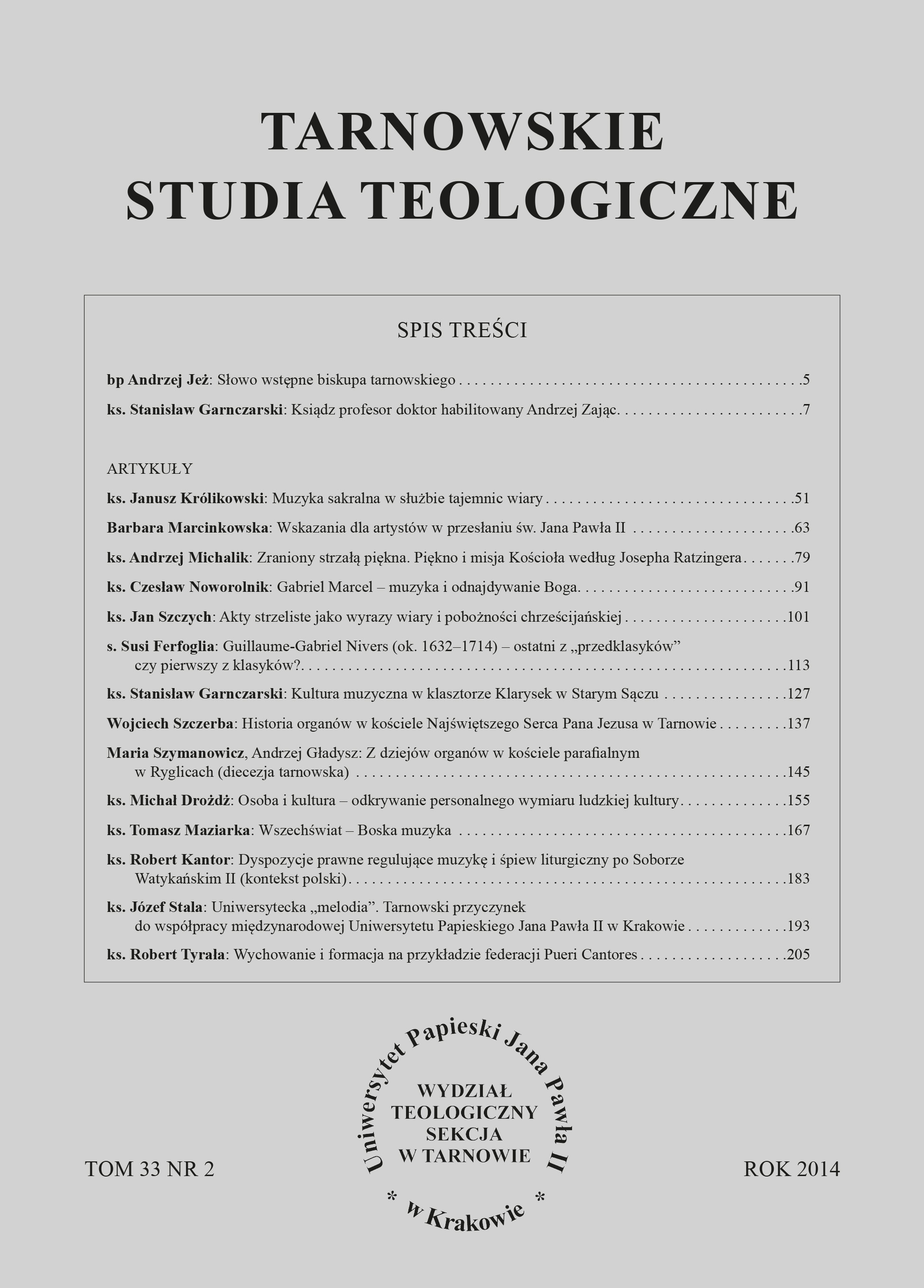Guillaume-Gabriel Nivers (ok. 1632–1714) – ostatni z „przedklasyków” czy pierwszy z klasyków?
DOI:
https://doi.org/10.15633/tst.689Słowa kluczowe:
klasyczna muzyka organowa, organowe wersety, śpiew gregoriański, muzyka kościelna, liturgia, technika alternatim, księgi organoweAbstrakt
In the French music the period 1665–1703 is the time of great changes, when the style known generally as classical organ music of the so-called Grand Siècle took its shape. Among the numerous composers active during that period was Guillaume-Gabriel Nivers, organist of Saint-Sulpice – one of the most eminent Parisian churches. His career developed in connection with the church, the convent of Benedictine nuns as well as the school for noble young ladies in Saint-Cyr-l’École. That is why Nivers composed only church music. His works, collected in three organ books and in the Thièry manuscript (ascribed to him), are representative of French music composed in the 17th–18th cent. It was the tradition associated with alternatim technique, with alternating sections in organ verses and chant. The thee organ books by Nivers constitute a large opus which includes numerous genres characteristic for the period; Nivers worked on all of them systematically, which led to their development, especially in liturgical music.
On the one hand, Nivers was „pre-classical”, which can be seen in his use of Gregorian cantus firmus (Mass, Hymns, Sequences), from which his contemporaries would largely depart, as well as in the „modal thinking”, especially in the works included in the Premier and Troisième Livre d’Orgue. On the other hand, his oeuvre opened the door to welcome the new period, which can be seen primarily in the „new style” – melodious, based on meticulously chosen registers, varied according to the character of a particular piece and its place in liturgy.
Pobrania
Opublikowane
Numer
Dział
Licencja
Autorzy publikujący w czasopiśmie udzielają jego wydawcy zgody o następującej treści:
- Autor zachowuje autorskie prawa majątkowe do utworu, a jednocześnie udziela wydawcy czasopisma zgody na jego pierwszą publikację w wersji drukowanej i wersji online na licencji Creative Commons Uznanie autorstwa 4.0 Międzynarodowe oraz zgody na wykonywanie opracowań, w tym przekładów.
- Autor ma możliwość udzielania zgody niewyłącznej na opublikowanie utworu w wersji, która ukazała się w czasopiśmie (np. zamieszczenia go w repozytorium instytucjonalnym lub opublikowania w książce), wraz z informacją o jego pierwszej publikacji w czasopiśmie.
- Autor może umieścić swój utwór online (np. w repozytorium instytucjonalnym lub na swojej stronie internetowej) jeszcze przed zgłoszeniem utworu do czasopisma.

